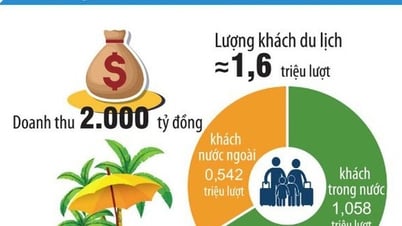
Workers tap rubber latex at Loc Ninh Rubber Plantation. (Photo: Hong Nhung/VNA)
With the Red Sea tensions lingering, trade experts predict that rubber exports will still face challenges in the international market.
Chinese demand remains the key factor affecting Vietnam's rubber exports.
Besides, the prolonged Red Sea tension will also affect Vietnam's rubber exports.
Citing data from the General Department of Customs, the Import-Export Department ( Ministry of Industry and Trade ) said that in January 2024, Vietnam's rubber exports reached about 260,000 tons, worth 365 million USD, down 3.3% in volume and 2.4% in value compared to December 2023.
In addition, compared to January 2023, rubber exports increased by 92.6% in volume and 99.8% in value. At the same time, the average rubber export price was at 1,404 USD/ton, up 0.9% compared to December 2023 and up 3.7% compared to January 2023.
According to the Import-Export Department, in 2023, Vietnam exported 2.14 million tons of rubber, worth 2.89 billion USD, down 0.1% in volume and 12.8% in value compared to 2022.
Among them, the main types of exported rubber are mixtures of natural rubber and synthetic rubber (HS 400280), Latex, SVR 10, SVR 3L, SVR CV60, RSS3, SVR 20...
Notably, natural rubber and synthetic rubber mixtures (HS 400280) are still the most exported items, accounting for 67.57% in volume and 68.98% in value of the country's total rubber exports, reaching over 1.44 million tons, worth 1.99 billion USD, up 10.2% in volume, but down 1.8% in value compared to 2022.
In particular, exports to China account for 99.81% in volume and 99.67% in value of the total mixture of natural rubber and synthetic rubber of the whole country.
In 2023, many types of rubber exports decreased in both volume and value compared to 2022. However, the export of some types still grew well in volume compared to 2022; notably: SVR CV60, recycled rubber, RSS1, RSS4, SVR CV40, RSS5..., but these types only account for a small proportion of Vietnam's total rubber exports.
In 2023, the average export price of all rubber varieties decreased sharply compared to 2022; in which the sharpest decrease was mixed rubber (HS: 4005) down 22.8%; Skim block down 22.4%; RSS3 down 17.6%; SVR 10 down 15.7%; SVR CV50 down 14.9%; Latex down 14.8%; SVR 20 down 14.2%.
In the world market, in January 2024, rubber prices on key Asian exchanges tended to increase due to support from optimistic auto market prospects and economic stimulus measures of the Chinese Government, as well as higher oil prices.
China's SAIC-GM-Wuling aims to sell 700,000 new energy vehicles in 2024.
In the domestic market, in January 2024, the price of raw rubber latex nationwide did not fluctuate much compared to the previous month.
At rubber companies, the current purchase price of raw rubber latex is maintained at around 270-305 VND/TSC, of which Phu Rieng Rubber Company maintains the purchase price at 285-305 VND/TSC, stable compared to the end of last month.
Binh Long Rubber Company keeps the purchase price at 285-295 VND/TSC. Ba Ria Rubber Company keeps the purchase price at 283-293 VND/TSC.
Mang Yang Rubber Company kept the purchase price at 270-278 VND/TSC, stable compared to the end of last month.
According to the Import-Export Department, in the coming time, tensions in the Red Sea are likely to cause fluctuations in rubber futures and spot prices.
Natural rubber prices usually adjust to oil prices, while oil prices are on the rise, as many oil and gas tankers are diverted away from the Red Sea, increasing costs and shipping times.
Furthermore, rising oil prices lead to an increase in synthetic rubber prices because crude oil is the raw material for synthetic rubber production. Natural rubber, a product that competes with synthetic rubber, also has positive prices./.
According to VNA
Source: https://www.vietnamplus.vn/du-bao-xuat-khau-cao-su-van-gap-kho-do-cang-thang-bien-do-post928179.vnp
Source





















![[Maritime News] Wan Hai Lines invests $150 million to buy 48,000 containers](https://vphoto.vietnam.vn/thumb/402x226/vietnam/resource/IMAGE/2025/6/20/c945a62aff624b4bb5c25e67e9bcc1cb)











































































Comment (0)